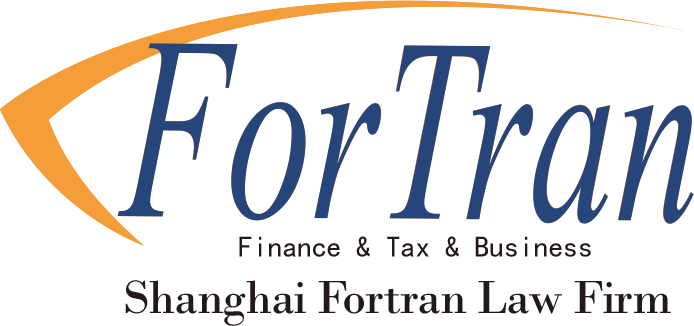This article provides a comprehensive overview of the compliance requirements for quantitative funds under the latest Chinese regulatory framework, covering fundraising disclosures, algorithmic trading rules, internal control standards, and special supervision of high-frequency trading.
This article provides a comprehensive overview of the compliance requirements for quantitative funds under the latest Chinese regulatory framework, covering fundraising disclosures, algorithmic trading rules, internal control standards, and special supervision of high-frequency trading.
Authored by: Ivy Yang
I. Special Compliance Requirements in Fundraising for Quantitative Funds
The fundraising process for quantitative funds is generally aligned with that of other private fund products. However, the key distinction lies in the need for enhanced disclosure of risks specific to quantitative strategies. This issue has become a central point of contention in recent disputes over sharp drawdowns in the net asset value (NAV) of quantitative private funds in early 2024.
According to the Guidelines on Regulating the Asset Management Business of Financial Institutions (commonly referred to as the “New Asset Management Rules”), financial institutions employing artificial intelligence (AI) technologies in asset management activities must strictly comply with general requirements on investor suitability, investment scope, information disclosure, and risk isolation. Institutions are prohibited from using AI to exaggerate promotional materials or mislead investors.
Financial institutions are required to file key parameters of AI models and the core logic of asset allocation with financial regulators. They must establish segregated intelligent investment accounts for individual investors, adequately disclose inherent flaws and risks associated with AI algorithms, clarify trade execution workflows, implement robust audit trail mechanisms, and closely monitor trading positions, risk limits, permitted trading types, and pricing thresholds of AI-driven accounts.
Therefore, during the fundraising phase, fund managers must provide tailored descriptions and disclosures of the risks associated with quantitative trading. This includes a proper explanation of the underlying strategy and specific warnings regarding the impact of historical data on algorithmic models—such as data sources, processing standards, and quality differentials, which may materially affect model outputs.
II. Compliance Requirements for Quantitative Trading Activities
(1) Pre-Trade Reporting Obligations (“File Before You Trade” Principle)
(a) Reporting Requirements and Amendments
Algorithmic trading investors (commonly referred to in China as ‘programmatic trading investors’) must submit complete, accurate, and timely reports. Material changes must be promptly updated. Information to be reported includes:
Account Information: Investor name, securities account number, designated broker or custodian, fund manager, etc.
Funding Details: Account capital, source and amount of leveraged funds, leverage ratio, etc.
Trading Information: Strategy type and core mechanics, execution methods, maximum order submission rate, daily order submission limits, etc.
Software Details: Software name, version, developer, etc.
Other Information: As required by the stock exchange, including contact information of the investor and the relevant securities firm.
(b) Reporting Process
Clients of securities firms must report through their brokers. Once verified, the broker shall confirm and submit the information to the stock exchange. Entities using independent trading units or other designated systems shall report directly to the exchange. Algorithmic trading may only commence after reporting obligations have been duly fulfilled. Exchanges are required to promptly confirm receipt of the report, periodically screen data for consistency, and may conduct audits on relevant parties.
(2) Trade Monitoring and Risk Management
In 2024, the Shanghai and Shenzhen Stock Exchanges conducted multiple training sessions with leading quantitative private fund managers. These sessions highlighted case studies on abnormal trading behaviors, reiterated compliance expectations, and emphasized the importance of internal controls to mitigate potential market disruptions and ensure stable market operations.
Given the heightened regulatory scrutiny, quantitative fund managers must implement robust internal compliance controls for trading activities. This includes embedding measurable indicators of abnormal trading behavior into algorithmic models. Exchanges have issued guidelines or detailed rules to provide quantifiable standards for identifying irregular trades. For instance, the Shanghai Stock Exchange (SSE) has established real-time surveillance measures focused on the following:
Abnormal Trading Activities: As defined in the SSE’s business rules, including behaviors that may affect price, volume, or system security. Key categories include:
Abnormal Submission Rate: Excessive order submissions or cancellations within a second;
Frequent Instant Cancellations: Repeated intraday orders followed by rapid cancellations within a second, leading to high cancellation ratios;
Spoofing or Layering: Repeated intraday small price push-ups or downs;
Large Block Trades in a Short Timeframe: Massive buying or selling within one minute, impacting benchmark indices (e.g., SSE Composite or STAR 50 Index).
High Frequency Thresholds: Submitting 300+ orders per second or over 20,000 orders in a single day.
Broad Market Impact: Abnormal price or volume fluctuations in multiple securities involving high participation from algorithmic traders.
Other Matters: As deemed necessary by the exchange.
(3) Internal Risk Control Systems
Private fund managers must establish and effectively implement risk control mechanisms for liquidity, concentration of holdings, leverage, trading frequency, basis risk management, factor exposure, and large block trades executed within short time intervals.
III. Institutional and Procedural Compliance Requirements
(1) Policy Framework
Firms engaged in algorithmic trading must establish dedicated operational, compliance, and risk control policies. Personnel with compliance responsibilities must carry out their duties diligently. Fund managers of quantitative private securities investment funds must design and enforce policies tailored to algorithmic trading, enhance the review and monitoring systems for algorithmic orders, and mitigate operational risks.
(2) Technical System Requirements
Trading systems used by private fund managers must meet the basic functional requirements set by securities exchanges and be fully tested to ensure continuous, stable operations.
(3) Process Implementation
Fund managers must establish and implement comprehensive processes for the development, testing, validation, compliance review, and deployment of algorithmic trading strategies.
(4) Recordkeeping Obligations
Fund managers must retain historical trading records and written documentation of algorithms or strategy rationales for no less than 20 years from the date of fund liquidation.
(5) Protection of IP Rights
Proper mechanisms should be established to protect the intellectual property rights of quantitative algorithms and strategies.
IV. Special Regulatory Measures for High-Frequency Trading (HFT)
High-frequency trading refers to algorithmic trading characterized by:
(a) High order submission/cancellation rates within short time intervals (e.g., over 300 orders per second per account);
(b) Large volumes of intraday order activity (e.g., over 20,000 orders per day per account);
(c) Other characteristics as defined by the exchange.
Regulators have imposed differentiated supervision for HFT, including requirements for additional disclosures such as server locations, system test reports, and contingency plans. Exchanges may impose higher fees on HFT activity and adopt stricter controls to prevent abnormal trading behavior.



